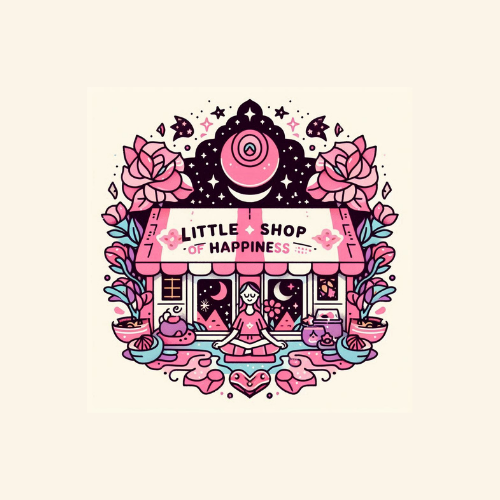Life can throw us into a fast-paced routine that consumes us before we even realise it. I remember being so deep into my career in social care, a job I genuinely loved, yet somewhere along the line, it quietly drained my energy. It was a role where I poured in every ounce of my being, dedicating myself mentally and physically. But here’s the twist; there was hardly anything left for me.
It’s easy to find yourself travelling on autopilot, thinking you’ve got everything covered. But sometimes, it’s in these very moments of routine where complacency creeps in. I didn’t see the signs as my work started taking a toll on my health, physically manifesting as back pain and plantar fasciitis, and emotionally leaving me at odds with myself. My identity felt tangled up with my career, and when I had to step back, I wasn’t sure who I was anymore.
The wake-up call came not when everything was perfect, but exactly when it all seemed to be falling apart. It’s okay to feel off course when life’s tides change suddenly—adversity often pushes us to the brink, but it’s also a chance to pause and rediscover what truly makes us happy.
When I say rediscover joy, I’m talking about really understanding what it means to be in tune with yourself, even when life gets tough. Acknowledge the adversities and how they affect your happiness and self-identity. It’s in those moments of clarity that we see what needs attention, how our pursuits should shift, and what aspects of our life really hold joy. This is what moves you closer to a happier, more fulfilling life.
The Journey to Self-Compassion
Self-compassion isn’t just a buzzword; it’s a lifeline when everything else feels like it’s slipping through your fingers. For the longest time, my energy was spent helping others, leaving little room to care for myself. Caught in that routine, I never prioritised showing myself the same kindness I freely gave to others, and boy, did it cost me.
The shift toward self-compassion started when I truly understood what it meant to treat myself with patience and grace. See, life loves throwing curveballs, and without a compassionate approach to ourselves, it’s easy to feel defeated. Suddenly, those small setbacks feel insurmountable and, worst of all, you become your harshest critic.
Opening up to self-compassion means embracing that it’s okay to not have everything figured out. It’s about cutting yourself some slack and recognising that you deserve the same care you give out daily. By doing so, you start to alleviate mental load and find a clearer, more supportive path forward.
During challenging moments, like when my body was physically demanding I slow down, the lack of self-compassion was palpable. Looking back, I see how offering myself a little love and understanding would’ve eased the burden of those difficult times.
To cultivate this habit, start small. Take a moment each day for self-reflection and gratitude. These moments act like anchors in a storm, reminding you of your own strength and self-worth. When you begin seeing self-compassion as that essential glue holding everything together, it becomes easier not only to manage tough times but to genuinely enjoy life’s little wins.
Identifying and Cultivating Your Happy Place
Finding your happy place can be like finding a refuge in the storm. It’s uniquely yours—it might be a physical location, a mental state, or just a simple activity that lights you up. For me, discovering what truly brings joy required a bit of patience and a lot of curiosity.
Happiness isn’t always about grand gestures or dramatic changes. It can start with little things like enjoying a walk in nature, getting lost in a book, or simply savouring a warm cup of tea in your favourite spot at home. The key is to consciously seek out and create moments that spark joy.
For a long time, my routine was so tightly packed that I forgot how to just be present. In moments when I felt stuck or out of touch with myself, I began to explore new activities that required no expectation from myself, only genuine enjoyment. This was vital in cultivating my happy place.
If you’re trying to find your spot, look at what activities leave you feeling recharged. Is it an afternoon spent painting or playing music? Or is it just allowing yourself uninterrupted time to journal your thoughts? These small actions can create massive shifts in your mindset.
Transitioning from complacency to a life brimming with joy is about being intentional. It’s about carving out time in your schedule to engage in what truly matters to you. These aren’t just hobbies—they’re lifelines back to yourself. By dedicating time regularly to things that make you smile, the positivity begins to trickle into other areas of your life, making difficult days a bit more manageable. It’s all about nurturing these happy places and allowing them to grow within you.
Remember, your happy place is the sanctuary you build for yourself. No one can tailor it for you, so indulge your interests and let them guide you back to a version of yourself that feels complete and content.
Breaking Negative Patterns and Embracing Positivity
Changing the way you see things can truly change your life, and it starts with recognising the language you use with yourself. I didn’t fully realise how many times in a day I’d casually say, “I can’t,” about the simplest things. It was my husband who pointed it out, and it took a bit of humility to embrace that feedback.
Now here’s a common trap—getting stuck in negative thought patterns without even noticing. Replacing those “I can’t” declarations with, “I can try…” or, “What if I do it this way?” opens up a whole new world of possibilities. This shift helps you break away from negative cycles and encourages a mindset that’s ready to embrace solutions.
Adopting a positive outlook doesn’t mean ignoring your problems. Rather, it means gearing your mindset to see them as hurdles you can overcome. It’s about understanding that while things might feel a bit off now, it’s not forever. I found that by shifting my language and internal dialogue, it became easier to tackle challenges without feeling constantly overwhelmed.
Gratitude is another tool that eases the journey from negativity to positivity. By acknowledging what’s going well, you amplify the good vibes in your life. It’s a simple practice that, once nurtured, grows into a more resilient outlook.
Curiosity plays a big role. By being curious about how things might improve or how you can grow, it shifts your focus to opportunities. Looking at life through a curious lens opens up a pathway to continuous learning and self-improvement.
Switching off the autopilot and re-training your mind takes time and effort but slowly guides you toward a happier, more fulfilling life. It’s like course-correcting a ship; little by little, things get back on track. Each step counts towards fostering a more positive attitude, and that’s absolutely worth nurturing.
Implementing Joyful Living in Daily Life
Building a life filled with joy isn’t about overnight transformations; it’s about weaving small, intentional habits into your daily routine. Think of these habits as seeds planted in the garden of your life—they need nurturing, but with time and care, they’ll flourish.
Starting each day with a simple act of self-compassion can set the tone for everything that follows. It could be as simple as a morning gratitude practice or a few moments of deep breathing before the chaos starts. These small practices ground you, preparing you to meet the day with a positive mindset.
Celebrate even the tiniest of successes, and remember that progress isn’t a straight line. Some days will be harder, and that’s perfectly normal. Progress isn’t negated by setbacks; in fact, it’s often those setbacks that propel you forward, as they offer new lessons and perspectives.
It’s vital to integrate self-compassion into all areas of your life—work, relationships, hobbies, and even in how you view yourself. This means being kind to yourself when things don’t go as planned and understanding that mess-ups are part of the human experience.
Joyful living is about creating a balance—a smooth blend of ambition, rest, and self-care. Recognise the importance of taking time for yourself and appreciating moments of stillness. These pauses aren’t interruptions of success; they’re the spaces that allow everything else to thrive. See how this new perspective leads a way to self compassion.
By threading self-compassion through the fabric of daily life, you foster resilience and happiness. These aren’t just practices but fundamental shifts in how you approach each day, welcoming both challenges and opportunities with an open heart. Life has a funny way of showing you what’s important at times and I’m so glad I eventually listened.
I hope my little insights help you to recognise or navigate your happy place too. Please reach out if there are other topics you would like me to cover and share.
So remember happiness begins with you.
Ali x

